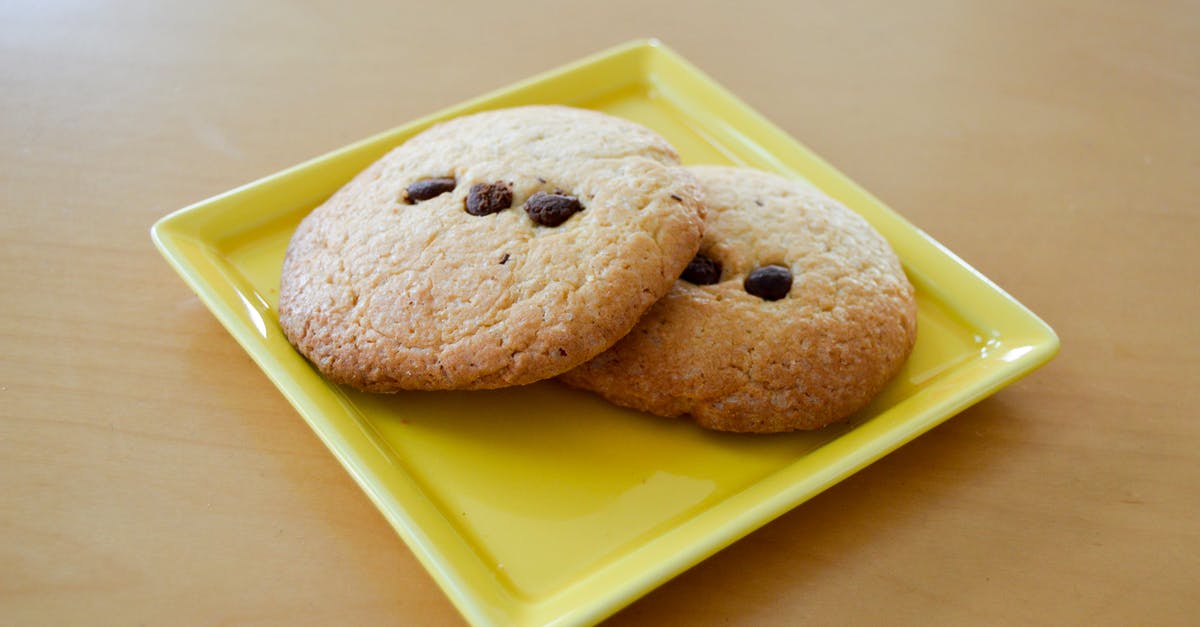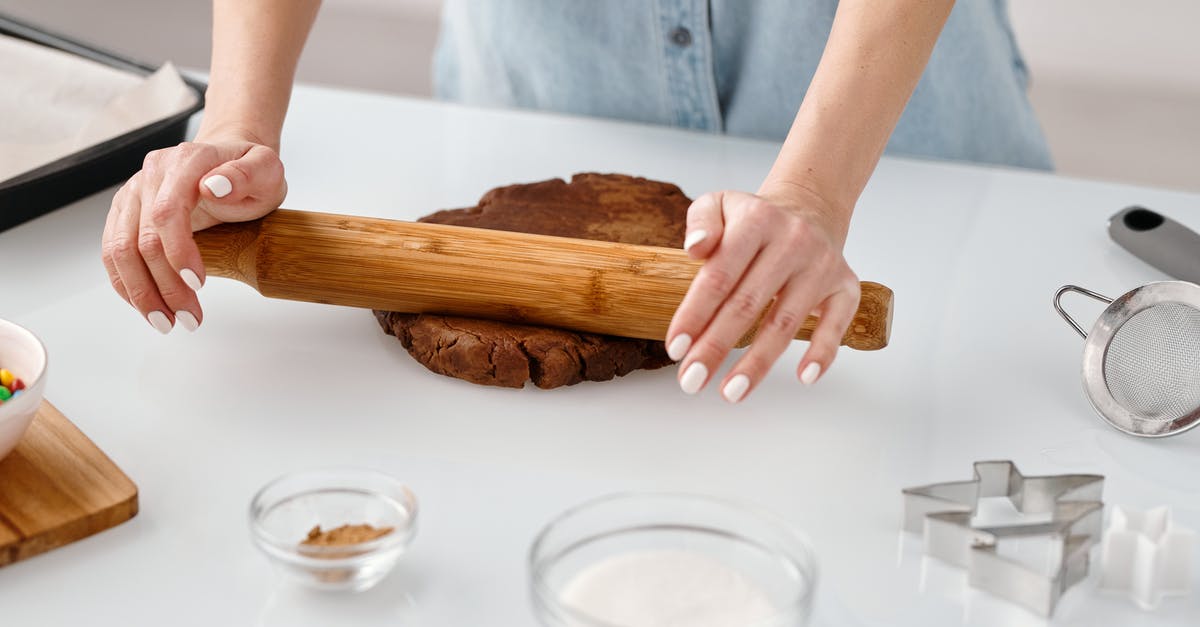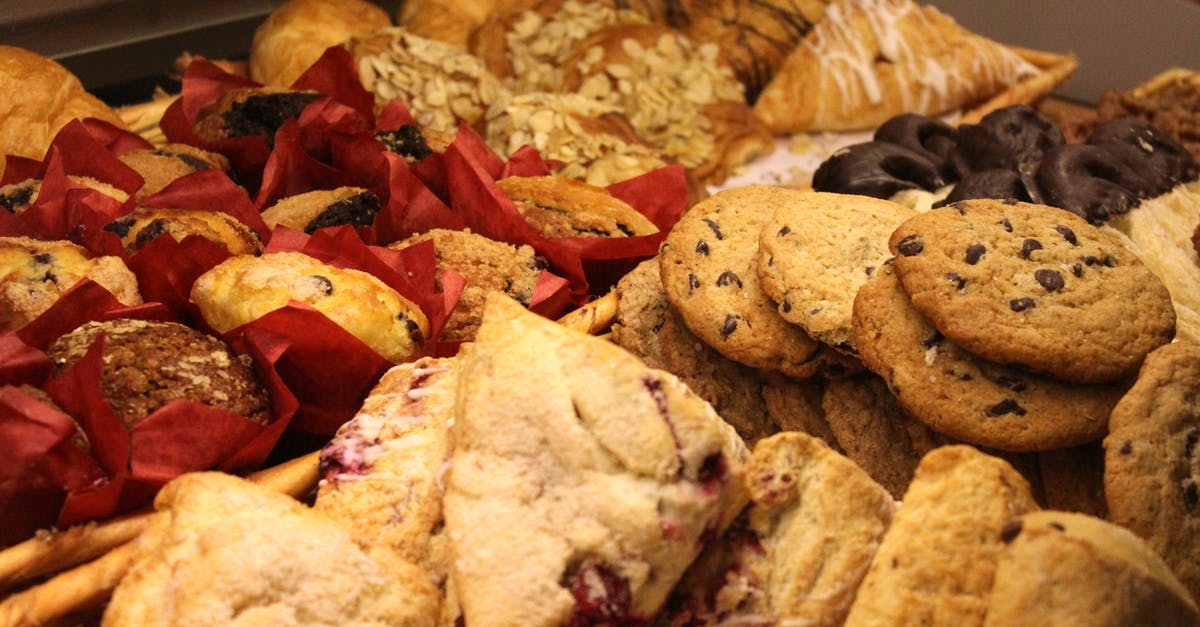Flat cookies when baking with milled grains

I've made whole wheat chocolate chip cookies from Good to the Grain many times with King Arthur Flour's whole wheat flour and they come out great. http://food52.com/blog/9497-kim-boyce-s-whole-wheat-chocolate-chip-cookies
When I mill hard red wheat and use it in the cookies (from finely milled to coarse) I get flat, barely edible cookies.
Anyone know why this happens and how I can fix it?
Edited to add: With the King Author wheat flour I use a 3T cookie scoop and the cookies flatten slightly and then raise. They have a slight crunch to them.
Using the milled flour and the same cookie scoop they at least double in diameter, do not raise much, and are very flat. They are really hard to bite and can only be eaten when dunked in milk.
I wish I had pictures, but the times I tried making them I didn't think to take any.
Best Answer
TL;DR: For cookies, use soft white wheat (or try mixing in spelt). And be aware that you may need to tweak some quantities of things like oil, baking powder, and sugar when you use different flours.
There are several types of modern wheat readily available for milling. The basic divisions are
- Red or white
- Soft or hard
- Winter or spring
Red means that the bran literally has a slightly redder color to it, but it is also a little tougher, with a slightly stronger flavor, and generally more noticeable in the finished product. Unless you're specifically going for that rustic wholemeal sort of effect, choose white wheat.
Soft and hard refer to how hard the berry is, but is also strongly correlated with how much gluten you get — soft meaning there's more starch and less protein, and hard being more protein and less starch. Basically, if you're baking bread you want hard; if you're baking cookies, muffins, cakes, etc., you want soft.
Spring wheat is (usually) planted in the spring and harvested before autumn. Winter wheat is (usually) planted later, so that it can't be harvested before winter; it goes dormant, and is harvested once it finishes growing in the spring. (In warmer places like parts of California, spring wheat actually grows during the warm winter, before the desperately hot summer arrives. It's still spring wheat, though, because of its genetic makeup.) Winter wheat tends to have slightly lower protein content, though the main driver is soft vs. hard.
Of course, in addition to the modern varieties, you'll also find ancient varieties like spelt, emmer, khorasan (a.k.a. kamut), and einkorn. These have slightly different flavor, and typically less gluten. The idea is that humans have bred wheat for millenia, starting from einkorn, to increase the gluten to provide more structure in their bread. But all that structure that's so important for bread is too much for more delicate baked goods like cakes, cookies, pancakes, etc. So you want to use one of the lower-gluten varieties for those. For example, you might try milling 50% soft white wheat and 50% spelt for those cookies, and I bet you'd get a great result.
All of these varieties still have bran, which is usually sifted out of all-purpose flour, pastry flour, cake flour, etc. When you use whole-grain flour (or mill it yourself and don't sift it), that bran tends to interrupt the formation of the gluten network, giving your baked goods a bit less structure — though maybe grittier, and possibly tougher or more bitter if you don't adjust your recipe.
That's not to mention rye, barley, and triticale (a hybrid of wheat and rye), which are the other gluten-containing grains. And then there are completely different grains like oat, buckwheat, millet, sorghum, teff, amaranth... (King Arthur Flour has a nice guide for this group here.)
All of this is basically saying that — even just among basic wheat varieties — there's a wide world of grains out there to try in your baking. Whether you buy them as flour, or mill them yourself, you'll really improve your skills if you start branching out by using new grains in your baking. But not all grains can be substituted for others. You need to think more, and maybe adapt recipes. Adjusting hydration levels is the first and most obvious thing. But sometimes you'll find that it helps to do things like adding some extra baking powder or adjusting the quantity of sugar to get your cookies just right.
Pictures about "Flat cookies when baking with milled grains"



How do I make my cookies flat instead of fluffy?
To help make your cookies come out fluffy, you should chill your cookie dough for at least one hour before baking them. You should always wait for your baking pan to cool before your bake more, and you need to make sure that your baking soda or powder has not expired, to name a few tips.How do you bake with freshly milled flour?
Soft wheat's higher-moisture content means you can't do a 1 to 1 substitute. Instead you need to increase your freshly milled soft wheat flour by \xbc cup for every 1 cup of flour in the recipe. So if the recipe calls for 1 cup of all-purpose flour (or pastry), increase the flour to 1 \xbc cups of freshly milled.How do you fix a flat cookie?
If your first batch of cookies bakes flat, try adding 1-2 tablespoons of flour to the remaining dough. Then bake a test cookie before baking the rest or adding a bit more flour. The problem could be your baking sheet.100% Whole Grain Soft, Chocolate Chip Cookies | Natasha's Kitchen Recipe Conversion
More answers regarding flat cookies when baking with milled grains
Answer 2
The reason is because red wheat lacks the structure, and as such so too would your cookies. This in turn would lead your cookies to spread flat, and since it's so thin, become hard. If you want to bake with milled hard red wheat, I would suggest mixing it with another flour that can structurally support your cookie. For example, wholemeal or plain flour.
Sources: Stack Exchange - This article follows the attribution requirements of Stack Exchange and is licensed under CC BY-SA 3.0.
Images: StockPhotosHub.com, Nicole Michalou, Jill Wellington, Leigh Patrick
